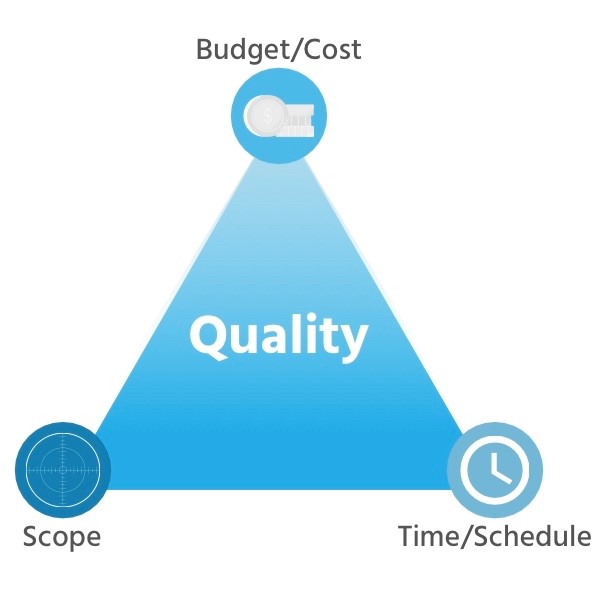When should you choose the Waterfall Methodology, what are the aspects that will be the most effective in knowing the process? Know more!
More...
Waterfall Methodology in a Nutshell
The Waterfall Methodology is a systematic process for developing software that follows a consecutive order from requirement analysis to maintenance. This model operates under the assumption that each phase should be fully completed and perfected before proceeding to the next, offering a straightforward approach that is easy to understand and manage. However, its rigidity may pose challenges for projects that require flexibility and adaptability to changing requirements.

Waterfall Methodology Phases
Requirements
According to the Waterfall methodology, the software development life cycle (SDLC) starts with the pivotal Requirements phase, a stage characterized by intensive collaboration among stakeholders to meticulously define and document the software's functional and non-functional specifications. This foundational phase necessitates precision and comprehensiveness in detailing the software's anticipated features, the project's scope, and constraints. Every identified requirement is meticulously documented, serving as a roadmap for all subsequent phases, ensuring clarity and shared understanding among the project's team members.
Given the Waterfall model’s inherent sequential structure, the Requirements phase's outputs significantly influence the project's remaining stages, necessitating absolute accuracy and foresight in the initial documentation. This documentation must be robust and detailed, effectively addressing all plausible scenarios, potential challenges, and meticulously incorporating stakeholders’ expectations to safeguard against misunderstandings and scope creep in later stages, ensuring a seamless, predictable development trajectory aligned with the initially established project goals and expectations.
Design
When the Requirements phase is completed, the Design phase commences, translating the meticulously documented specifications into a coherent and practical technical blueprint for the software. This stage is subdivided into high-level and detailed design. The high-level design focuses on outlining the overarching system architecture, providing a framework that delineates the software's general structure, pinpointing the various components and elucidating their interactions.
The detailed design sub-phase takes a granular approach, zooming in on each identified component from the high-level design stage, meticulously specifying the functionalities, attributes, and interactions of each module within the software. Additionally, this sub-phase is characterized by crucial decision-making processes regarding the selection of the appropriate technology stack, identification of necessary hardware requirements, and finalization of other vital technical specifications, laying a solid foundation for the Implementation phase.
While Agile allows for flexibility and adjustments in response to changing client needs or market demands, Waterfall's rigid structure doesn't permit alterations once the project begins. This strict approach ensures clarity and consensus but also requires stakeholders to anticipate and articulate all system requirements accurately at the onset.
Implementation
The Implementation phase is where the software begins to materialize, with developers writing code based on the detailed design blueprint. This phase requires strict adherence to the predetermined specifications, with each module or component of the software developed often independently, then integrated to form the complete system. Developers diligently work to ensure that the code they write aligns seamlessly with the design documentation and meets the requirements set out in the first phase.
Implementation in the Waterfall model is a critical stage that demands attention to detail and proficiency in translating design documents into functional code. Unlike Agile methodologies, where coding and testing often occur concurrently with room for continuous adjustments, Waterfall’s Implementation phase is more rigid, allowing little to no deviation from the initially outlined design and requirements. The developers, therefore, must be meticulous and accurate in their coding practices, crafting a product that mirrors the documented requirements and design closely.
Testing
Upon the completion of the Implementation phase, the Testing phase ensues in the Waterfall model. This crucial stage involves a systematic examination and verification of each developed software component, ensuring it functions correctly and meets the initially established requirements. The software undergoes rigorous testing processes to identify and rectify any defects, errors, or issues before it is deployed.
According to the Waterfall methodology, testing is thorough and structured, aimed at delivering a product free of defects. The testing team meticulously works to ensure that the software aligns perfectly with the documented requirements and design, functioning efficiently without any discrepancies. Since this model does not easily accommodate changes once the project is underway, it's imperative that the testing phase catches and addresses all potential issues, delivering a product that is ready for deployment.
Deployment
Once the software passes the Testing phase, it enters Deployment. In this stage, the fully developed and tested software is transferred from a testing environment to a production environment, making it accessible to users. Deployment in the Waterfall model is a significant milestone as it marks the delivery of the product to the client.
The Waterfall model’s Deployment phase is characterized by its all-at-once approach, where the entire software system, having been developed and tested, is deployed in one go. Users receive a finished product, complete and polished. While this means there is a wait time for users until the entire software is ready, it ensures that the product they receive is thorough, tested, and complete.
Maintenance
Following Deployment, the software enters the Maintenance phase. During this period, the software is monitored for issues that might have been overlooked during the Testing phase. The development team also implements updates and improvements as necessary to ensure the software continues to meet the users’ needs efficiently.
Compared to Agile, changes during the Maintenance phase in the Waterfall methodology can be significantly more challenging to implement. Due to Waterfall’s sequential and rigid structure, making alterations or updates post-deployment often requires a substantial amount of time, effort, and resources, making it crucial to anticipate and address as many issues as possible in the earlier phases.
When Should You Choose the Waterfall Methodology?
Project Scope & Complexity
When your project has a clearly defined scope and high complexity, Waterfall can be the method of choice. For example, projects like building an operating system or sophisticated financial systems that demand a detailed and fixed scope can benefit from Waterfall's structured stages. However, if your project is expected to change and adapt in response to emerging market trends, or if it’s not fully defined from the beginning, the rigid structure of Waterfall might pose challenges, making Agile or another flexible methodology a better fit.
Requirements Clarity
Waterfall is optimal when the project's requirements are well-defined and stable. If you’re embarking on projects such as data migrations, hardware integrations, or others where the requirements are set and alterations are not expected, Waterfall is highly effective. However, for projects where requirements are anticipated to evolve or remain unclear at the onset, the inflexibility of Waterfall can be a significant limitation. In such cases, Agile or iterative methodologies, which accommodate and even expect changes in requirements, might be more suitable.
Time-to-Market
For projects where time-to-market is not urgent, and a polished, complete product is prioritized, Waterfall is ideal. Projects with extended release cycles that prioritize delivering a comprehensive, finished product over rapid, incremental improvements might find Waterfall more appropriate. Conversely, if rapid delivery and continuous improvement are crucial due to a competitive market or other factors, Agile methodologies, with their emphasis on speed and flexibility, may be more appropriate than Waterfall.
Budget Constraints
Projects with defined budgets and clear specifications might find Waterfall beneficial. For instance, government contracts with fixed funds and explicit deliverables suit Waterfall’s predictable nature. However, while Waterfall allows precise initial cost estimation due to its defined scope, unforeseen changes can lead to budget overruns. If your project might pivot or expand, consider Agile methodologies that provide flexibility to adapt to changes, albeit with less budget predictability.

The Trinity of the Project: Budget-Time-Scope
The "Budget-Time-Scope" Trinity, often referred to as the "Project Management Triangle" or "Iron Triangle," is a crucial concept in project management, including in the Waterfall methodology. In this context, each side of the triangle represents one of the three critical constraints that every project faces. This is how the Waterfall methodology addresses each element of the Trinity:
Budget
Fixed Budgeting: The Waterfall methodology requires a detailed understanding and documentation of requirements from the outset. This allows for more accurate initial budgeting since the scope and requirements are clearly defined before the project begins.
Cost Predictability: Due to its structured, phased approach, Waterfall allows for predictable costs, as each phase must be completed before the next begins, limiting unexpected expenses related to scope changes.
Risk of Overruns: However, if issues are identified late in the project (which is common due to the sequential testing phase), addressing these can lead to cost overruns.
Time
Scheduled Phases: Each phase in Waterfall is planned and scheduled sequentially. This structure facilitates a clear timeline but offers limited flexibility for adjustments once the schedule is set.
Time Efficiency: While the sequential approach may seem time-efficient, it could lead to delays if a phase takes longer than planned since subsequent phases can't commence until the preceding one is completed.
Late Discoveries: Identifying issues in later stages can cause significant delays as it might require revisiting and altering previous phases.
Scope
Well-Defined Scope: Waterfall demands a thoroughly defined project scope from the onset. The detailed initial planning phase helps in clearly outlining the project’s objectives, deliverables, and limitations.
Limited Flexibility: Once the scope is set, it’s challenging to accommodate changes. Any alteration in scope can lead to a cascading effect, impacting time and budget significantly.
Dependence on Initial Planning: The success of the project is heavily dependent on the accuracy and completeness of the initial scope definition, making it crucial to get it right from the start.
In the Waterfall methodology, the Budget-Time-Scope trinity is tightly interlinked, with each constraint influencing the others. While Waterfall provides clarity and predictability through its structured approach, it also poses challenges, especially when changes are required after the project has commenced. For projects where requirements are clear and unlikely to change, Waterfall can be an effective approach, but for dynamic projects with uncertain or evolving requirements, more flexible methodologies might be more suitable.

The PMBOK® Guide
The Project Management Body of Knowledge (PMBOK® Guide) certainly contains the best-known, most accurate summary of the Waterfall methodology used in software development, which is a generally accepted repository of project management methods. The book is a lot more detailed than the methodology itself, as general management knowledge is also included. The PMBOK® Guide is the basis of the CAPM and PMP exams.



